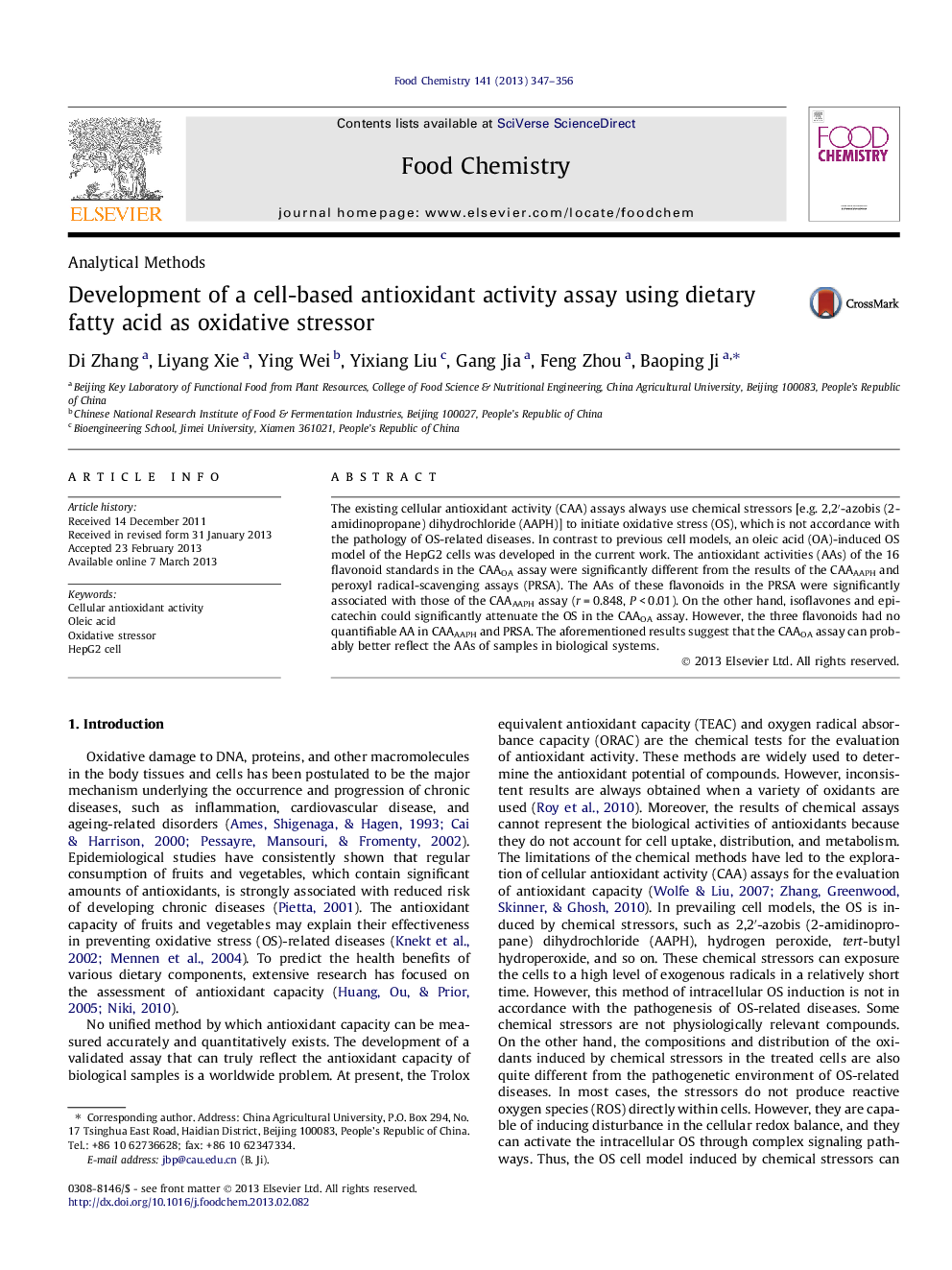| Article ID | Journal | Published Year | Pages | File Type |
|---|---|---|---|---|
| 10542432 | Food Chemistry | 2013 | 10 Pages |
Abstract
The existing cellular antioxidant activity (CAA) assays always use chemical stressors [e.g. 2,2â²-azobis (2-amidinopropane) dihydrochloride (AAPH)] to initiate oxidative stress (OS), which is not accordance with the pathology of OS-related diseases. In contrast to previous cell models, an oleic acid (OA)-induced OS model of the HepG2 cells was developed in the current work. The antioxidant activities (AAs) of the 16 flavonoid standards in the CAAOA assay were significantly different from the results of the CAAAAPH and peroxyl radical-scavenging assays (PRSA). The AAs of these flavonoids in the PRSA were significantly associated with those of the CAAAAPH assay (r = 0.848, P < 0.01). On the other hand, isoflavones and epicatechin could significantly attenuate the OS in the CAAOA assay. However, the three flavonoids had no quantifiable AA in CAAAAPH and PRSA. The aforementioned results suggest that the CAAOA assay can probably better reflect the AAs of samples in biological systems.
Related Topics
Physical Sciences and Engineering
Chemistry
Analytical Chemistry
Authors
Di Zhang, Liyang Xie, Ying Wei, Yixiang Liu, Gang Jia, Feng Zhou, Baoping Ji,
